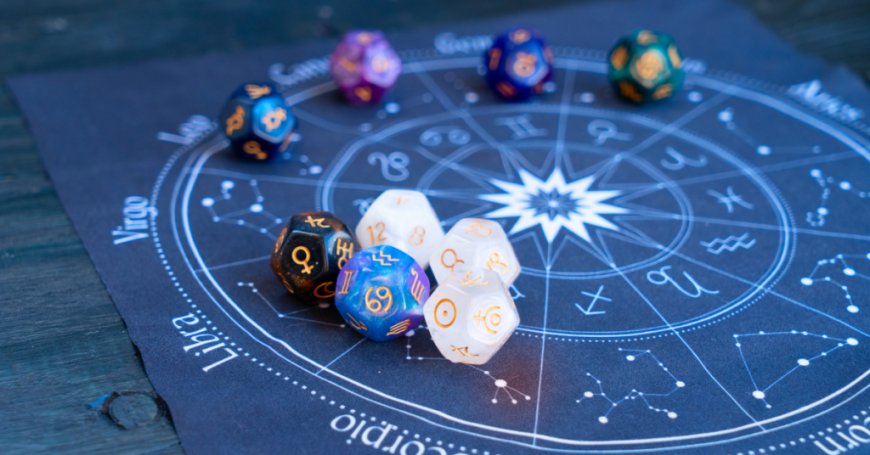What is Vedic Astrology and How It Works: A Beginner's Guide
Explore the profound world of Vedic astrology — what it is, how it works, and why it's still relevant in today’s modern world. Learn how ancient wisdom helps decode your life map.

In todays fast-paced world, more and more people are turning to ancient wisdom for answers. One such system that has stood the test of time is Vedic astrology. But what exactly is Vedic astrology and how does it work?
Lets break it down in simple terms, so whether youre a curious beginner or someone looking to reconnect with your roots, youll understand the magic behind this sacred science.
What is Vedic Astrology?
Vedic astrology, also known as Jyotish Shastra, is the traditional Hindu system of astrology that originated in ancient India. Jyotish literally means science of light, and it aims to illuminate a persons path in life by studying the positions of planets and stars.
Unlike Western astrology, which is based on the tropical zodiac, Vedic astrology uses the sidereal zodiac, which aligns with the actual constellations in the sky. This key difference makes Vedic astrology deeply connected with the real-time movement of celestial bodies.
Origins Rooted in Ancient Texts
The roots of Vedic astrology can be traced back over 5,000 years to the Vedas the oldest sacred texts of Hinduism. It was developed by sages who observed the heavens and noticed how planetary movements seemed to influence natural events and human behavior.
Over time, this sacred knowledge was codified into detailed systems that formed the foundation of Jyotish. Its still used today for everything from choosing wedding dates to understanding career potential and health issues.
The Core Elements of Vedic Astrology
To truly grasp what is Vedic astrology and how it works, you need to understand a few key components:
1. The Birth Chart (Janma Kundali)
At the heart of Vedic astrology is the birth chart, also called the kundali. This chart is a snapshot of the sky at the exact moment you were born. It maps out the positions of all nine planets (Navagraha) in the twelve zodiac signs and twelve houses.
2. The Planets (Grahas)
There are nine main celestial influences in Vedic astrology: Sun, Moon, Mars, Mercury, Jupiter, Venus, Saturn, Rahu (North Node), and Ketu (South Node). Each planet represents different energies and aspects of life.
3. The Zodiac Signs (Rashis)
There are twelve zodiac signs, from Aries (Mesha) to Pisces (Meena). Each sign has unique traits and governs a particular area of the birth chart.
4. The Houses (Bhavas)
The chart is divided into 12 houses, each representing different life areaslike career, relationships, health, wealth, and more.
5. Nakshatras (Lunar Mansions)
Vedic astrology also uses 27 lunar constellations or nakshatras, which add another layer of detail and accuracy to the chart interpretation.
How Vedic Astrology Works
The main principle of Vedic astrology is that your birth chart holds the blueprint of your life. By analyzing the placement of planets in various signs and houses at your time of birth, astrologers can decode patterns related to your personality, destiny, and karmic journey.
Lets look at how it works in real-world situations:
? Personality Assessment
Your ascendant (or rising sign) and the Moon sign are considered crucial in Vedic astrology. They reveal your outer behavior, emotional nature, and how others perceive you.
? Predictive Astrology (Dasha System)
Vedic astrology uses a time-period system known as the Vimshottari Dasha. This tells you which planetary influences will be active at different times in your life, offering insight into periods of success, challenges, or transformation.
? Matching for Marriage (Kundali Milan)
Compatibility checks for marriage are a big part of Jyotish. By comparing two peoples charts, astrologers assess harmony in values, emotions, and life goals.
? Muhurta (Auspicious Timing)
Whether its a wedding, a business launch, or housewarming, Vedic astrology helps pick the most favorable time to start anything new. This practice is called muhurta.
Vedic Astrology vs. Western Astrology
While both systems aim to provide life guidance, Vedic astrology is more deterministic and focuses heavily on karma and dharma. Its highly mathematical, using precise calculations for greater accuracy. Western astrology, on the other hand, tends to emphasize psychology and personal growth.
Another big difference is the use of lunar constellations in Vedic astrology, which brings more subtle insights into emotional and spiritual patterns.
Why is Vedic Astrology Still Relevant?
In a world full of noise, people are yearning for tools that offer real guidance. Vedic astrology doesn't promise magic or shortcuts instead, it reveals patterns and possibilities. It helps you understand your life purpose, identify challenges, and make informed decisions based on your karmic blueprint.
From corporate professionals and artists to spiritual seekers, people across the globe are now consulting Vedic astrologers for clarity and self-awareness.
Where to Learn More
If youre curious to dive deeper into this ancient science, you can explore detailed resources about Vedic astrology including how charts are created, interpreted, and applied to daily life.
This is more than just star-gazing its a timeless tool for self-discovery.
Final Thoughts
Vedic astrology is not just about predicting the future. Its about understanding yourself, your karma, and your connection to the universe. When practiced with sincerity, it becomes a guiding light a map for navigating lifes journey.
So the next time you wonder, what is Vedic astrology and how it works, remember: its a sacred language of the stars, written long before you were born, yet constantly speaking to you if youre willing to listen.








































